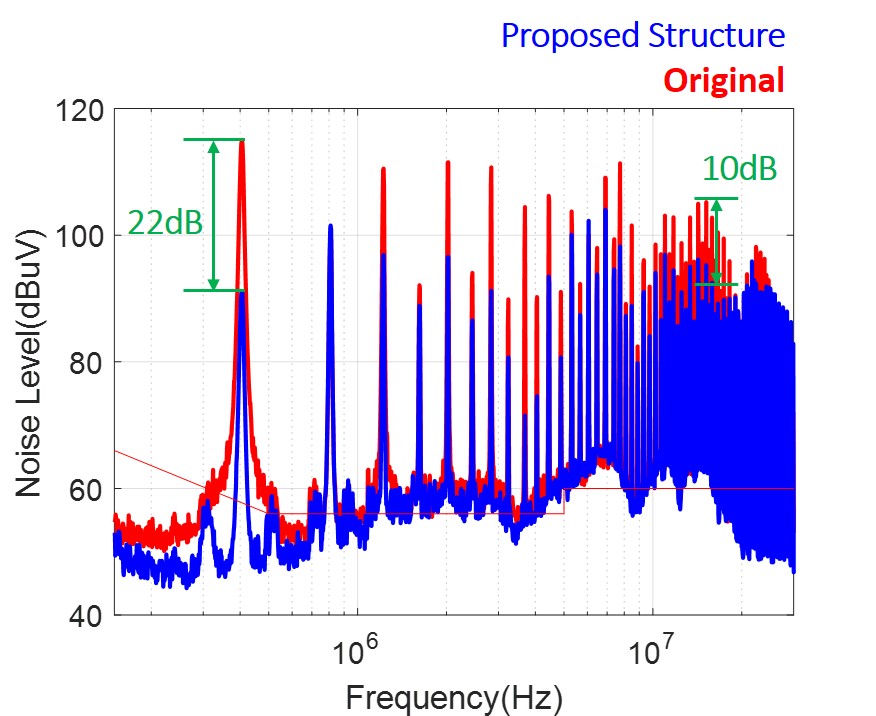
Fig. 1. Proposed symmetrical structure.
The newly emerged wide bandgap devices, including both silicon-carbide and gallium-nitride devices, provide a much better figure of merit compared with silicon devices. They can achieve faster turn on/off speed, shorten the current/voltage transition interval, and significantly reduce the switching loss. One benefit of this high-frequency operation is the possibility of utilizing printed circuit boards (PCB) as transformer windings. Compared with a conventional Litz wire-based transformer, the interwinding capacitor increases significantly due to a much larger overlapping area, and a shorter distance between the windings. In addition, to minimize the ac winding loss, the adoption of an interleaved PCB winding structure is necessary in high-frequency operations. This results in an even larger capacitor between the primary and secondary windings. The large interwinding capacitor of the PCB winding transformer forms a very low impedance path for common mode (CM) current, and together with the high
dV/dt brought by fast switching speed, the resultant CM noise is significant. The higher level of CM noise requires larger CM choke in order to comply with industry standards and regulations, and as a result, the whole system efficiency and power density are compromised.
In this paper, using a CLLC resonant converter as an example, a symmetrical resonant converter structure and a symmetrical PCB winding transformer structure are proposed to cancel the CM current through the interwinding capacitor. No additional components are needed, and the interleave between windings is not sacrificed.
A 6.6 kW 500 kHz CLLC resonant converter is built to verify the proposed symmetrical structure. The prototype has 130 W/in
3 power density, including the heatsink and cold plate. The CM noise spectrum is tested to demonstrate the superior performance of the proposed symmetrical structure, as shown in Fig. 2. From the measurement results, we can see that the proposed symmetrical resonant converter structure and the symmetrical transformer structure can significantly reduce the CM noise in the system, both for fundamental switching frequency and its high order harmonics.

Fig. 2. Testing results of EMI performance with the proposed split capacitor and symmetrical transformer connection.
























































































